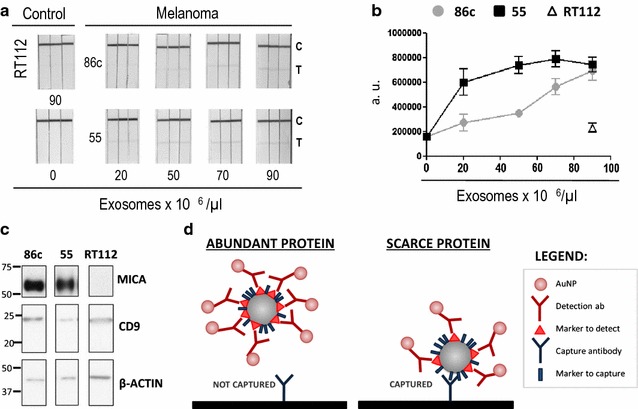Fig. 3.

Exosomal MICA detected by LFIA from different melanoma cell lines. a Scanned LFIA strips of the exosome titration. Melanoma exosomes were derived from either Ma-Mel-86c (86c) or Ma-Mel-55 (55), incubated with AuNP-anti-MICA, as detection antibody, in a final volume of 100 μL and run for 15 min in triplicates in strips containing a test line of anti-CD9. Two negative controls were included: a sample containing 90 × 106 exosomes from the bladder cancer line RT-112 which does not express detectable MICA and a sample without exosomes (buffer only). The positions of the test (T) and control lines (C) are indicated. b Electronic quantitation of the detected signal. The Test line signal from A was quantified using the ChemiDoc™ MP Imaging System and represented as arbitrary units (a.u.). Data are the mean and SEM of the triplicates. c Comparison of MICA levels by Western blot. The relative amounts of MICA and CD9 expression were checked in the same sample used for LFIA: melanoma exosomes derived from Ma-Mel-86c (86c), Ma-Mel-55 (55) and the bladder cancer cell line RT-112. Actin was used as loading control. d Model proposed. Based on the results of the LFIA experiments comparing exosomes containing different quantities of the detected marker we propose a steric hindrance model: if a marker is abundant, the exosome is completely covered by detection antibody. This reduces the availability of epitopes for the capture antibody (left panel). However, if the detection marker is more scarce, the exosome can be captured (right panel)
